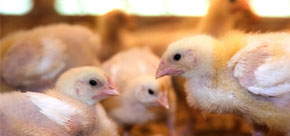Ducks Standards
HATCHERY EGGS Version 5.1 (modified)
Click to view
Key – Those standards which have greater significance (all other standards are normal)
Recommendation – Those which do not affect certification
New – A completely new standard which the member must now adhere to
Revised – A standard that has changed and requires the member to take some different or additional action to before
Upgraded – The standard has been upgraded to a Key standard or from a Recommendation to a full standard
Appendix – Referenced in ‘How you will be measured’. Indicates that additional information is provided in the Appendices, which are available at the end of each section.
KH.HC.1
Eggs from flocks infected with Salmonella enteritidis or Salmonella typhimurium must not be admitted to the hatchery
How you will be measured
KH.HC.1.a
KH.HC.3
One way product flow must be maintained from egg receipt to duckling dispatch
KH.HC.4
Incoming air must be filtered and a positive airflow from eggs to ducklings must be maintained
How you will be measured
KH.HC.4.a
KH.HC.4.b
KH.HC.4.c
Filter check records
KH.HC.5
Differentiation must be maintained between ‘clean’ and ‘dirty’ areas
How you will be measured
KH.HC.5.a
KH.HC.5.b
KH.HC.6
All eggs must be fumigated or sanitised prior to setting
How you will be measured
KH.HC.6.a
- Fumigation/sanitising parameter records
- Written fumigation Procedure
KH.HC.7
Incubation hatcher and setter equipment must be easy to clean, in good working order and sealed to the floor
KH.HC.7.1
Automation and conveyors must not cause injury to ducklings
KH.HC.7.2
The appropriate incubator or hatchery programme for the machine used must be available for inspection
Incubator or hatchery programme
KH.HC.8
The hatchery must have a dedicated egg store and a designated setter room.
KH.HC.9
Eggs must be stored in a temperature and humidity controlled room
Daily records of temperatures in incubator and hatcher rooms
KH.HC.10
Hatching eggs must be identifiable
How you will be measured
KH.HC.10.a
KH.HC.10.b
KH.HC.11
The hatchery must retain production records for each consignment of eggs
How you will be measured
KH.HC.11.a
Production records
KH.HC.12
Eggs and ducklings must be transported in purpose built vehicles
How you will be measured
KH.HC.12.a
KH.HC.12.b
KH.HC.12.c
KH.HC.12.d
KH.HC.12.e
KH.HC.13
A vehicle cleaning and sanitation policy is in place
How you will be measured
KH.HC.13.a
KH.HC.13.b
Vehicle sanitation policy
KH.HC.14
Injured or sick ducklings must not be transported
How you will be measured
KH.HC.14.a
Mortality records
KH.HC.15
The time between hatch and unloading at the farm must not exceed 72 hours
KH.HC.16
Ducklings must be placed in clean, dry, ventilated containers
How you will be measured
KH.HC.16.a
